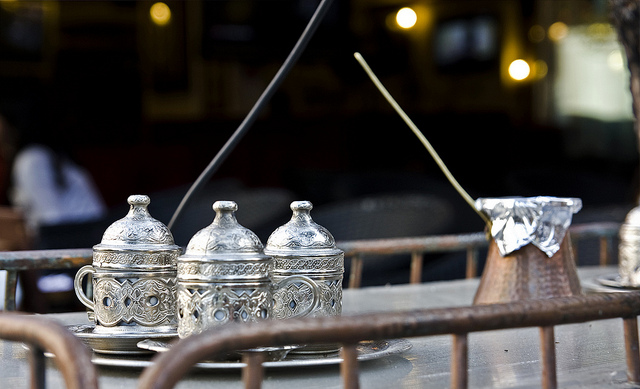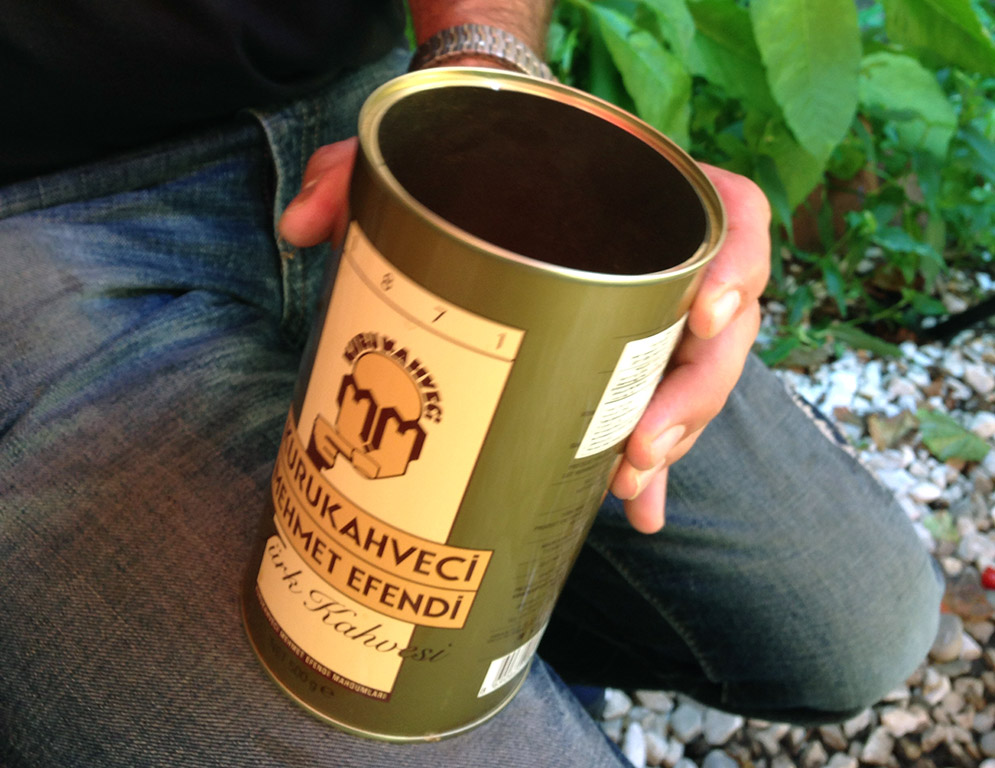[A]s we look for the best new ways to brew, it’s worthwhile circling back to the oldest. There’s a new café in Bushwick called Fairweather—there’s no sign out front, if you need to gauge of its hipness—and in addition to pulling espresso and selling drip coffee, the owner Shane Sener offers Turkish coffee. Shane moved from his native Turkey years ago, where he worked in tea shops since he was young, but only just opened Fairweather last year. Since he was serving Turkish coffee alongside espresso made with some respectable Brooklyn Roasting Company beans, I wanted to know if there was any fusion between the two styles.
“It’s not only that you cook it, it’s how you cook it,” explained Shane’s friend Dare Jenghis while Shane prepared the coffee. Over a low flame, finely ground coffee and cold water are heated to a boil before a portion is poured off into cups. The process is repeated until each cup is filled with the right proportion of grounds on the bottom and foam on the top. Foam, as it turns out, is the marker of a well-made cup of Turkish coffee.
The Turkish delight Shane served alongside the small coffee perfectly balances the bitterness of the cup. Shane is of the same opinion on sugar as many snobs, saying “sugar is a new trend” (though he means in the last 100 years). Unfortunately, there hasn’t been any cultural exchange in his shop between Turkish coffee and the specialty market’s focus on origin or roasting. “I’ve never seen anyone do a search on the background of a Turkish coffee,” he said, showing me a canister of Kurukahveci Mehmet Efendi. “I pay attention to brands instead of the origin,” he said. Started in 1871, it’s a heavyweight brand and older than giants such as Lavazza.
Determined to see what this traditional brewing method could bring out in fresher, higher quality beans, I went home to try some Brooklyn coffee, Turkish style. Ninth Street Espresso now roasts at Pulley Collective in Red Hook, so I grabbed a bag of the Alphabet City. Used for Ninth Street’s espresso drinks, I hoped the fruit-forward notes would counteract some of the bitterness in Turkish coffee. And since the coffee cooks while you brew it, a light or medium roast works well. A coarse grind led to a disastrous first cup, but I finally achieved a nice powder that I floated in a small saucepan over cold water and boiled.
The result was not bad, but my poor foam game would disappointed even a lenient Turk. The cup was smooth, but it had less body than Ninth’s normal espressos. It might have improved in Shane’s experienced hands. But even so, is it worth the time?
Which leads back to the novelty of Turkish coffee at Fairweather. Shane says he averages about a cup of Turkish coffee a day at the Bushwick location. But he prices the cup at the cost of an americano, generous considering that Turkish coffee requires almost ten minutes of constant attention.
“If you price it well, it has to be $10 dollars,” Dare said. “But no one will pay $10 dollars for coffee.”
Maybe. But if they did anywhere in the world, it would be New York City.
—Peter D’Amato is a writer based in New York City. Photo by Barbara Piancastelli. In next week’s Nine Bars, Michael Butterworth will look at one man’s mission to revive Turkish coffee in third-wave style.
















